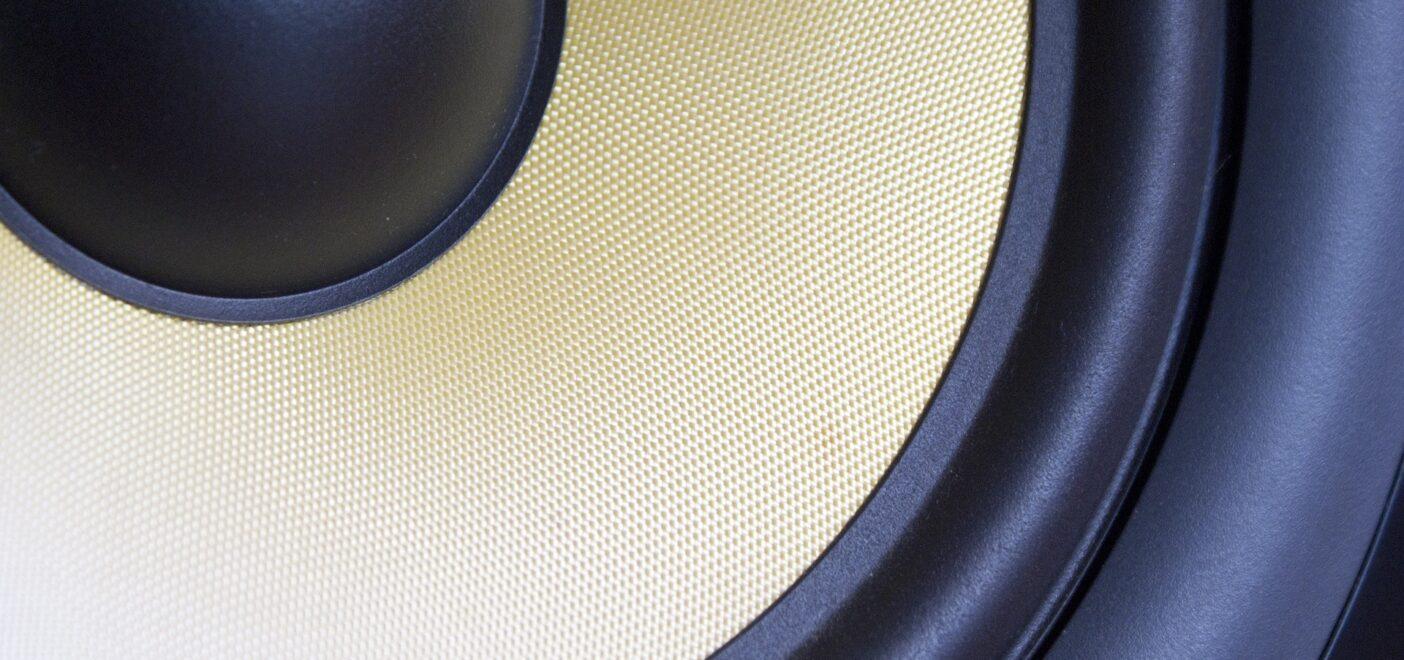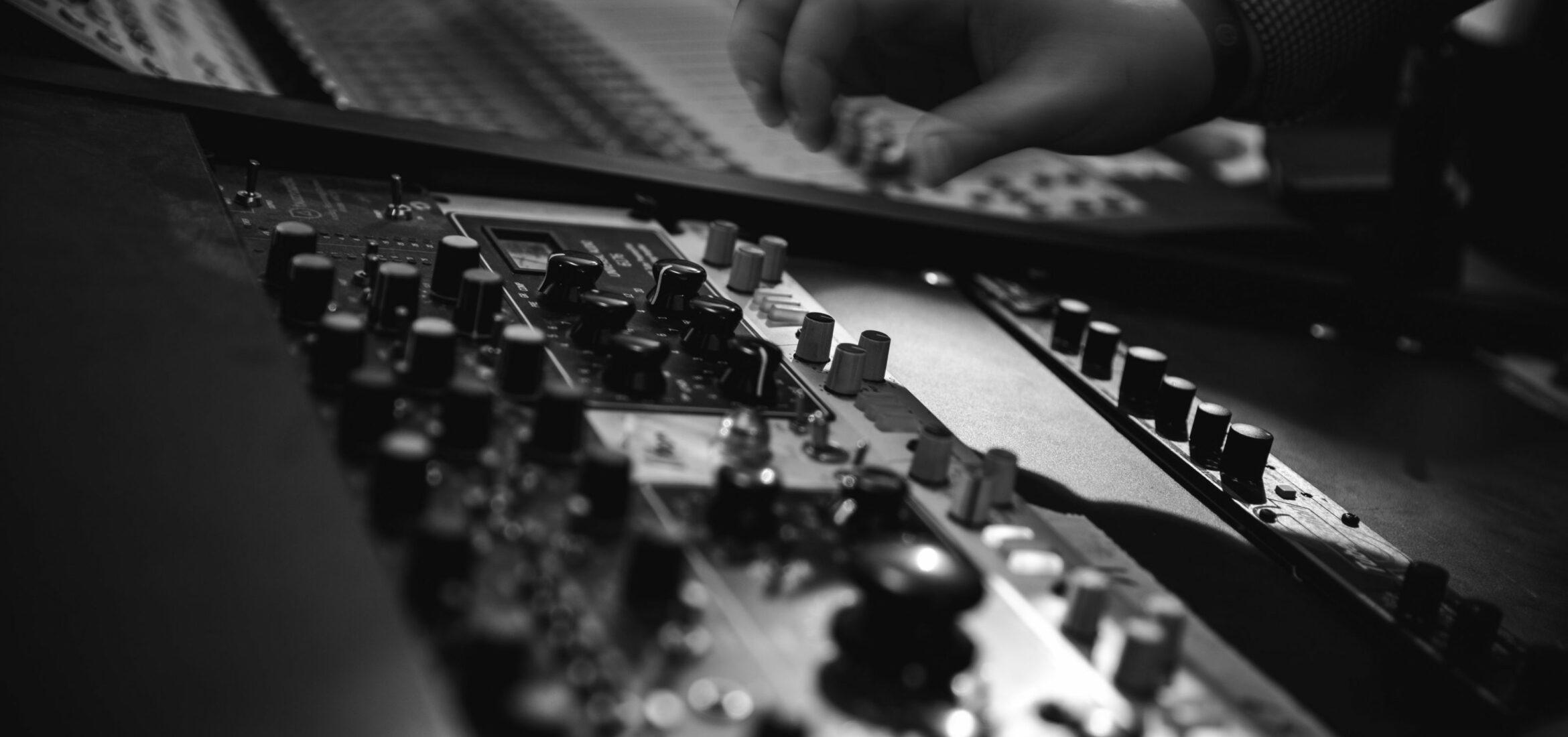Stereo speakers just won’t cut it when it comes to mixing. If you’re serious about mixing, you’ll want to invest in some top quality studio monitors or at least some studio headphones. This is because they’re designed to deliver a “flat” frequency response. That is, no frequencies are purposefully boosted or attenuated to color the sound to enhance the track, like with Hi-Fi and stereo speakers.
This means that you’ll be able to hear how the song truly sounds and make the appropriate adjustments to balance out your mix. Equally, thanks to the neutral frequency response, your mix will translate better across different sound systems. The idea is that if you achieve a clean mix on studio monitors, it’ll sound good anywhere. The same cannot be said for Hi-Fi and stereo speakers.
So you’re sold on studio monitors. The question now is: which ones? In this article, we’ll break down the top studio monitor speakers for every budget in 2025, from $100 to $1000, per pair.
Table of Contents
- How To Choose Your Studio Monitor Speakers
- Under class="wp-block-heading has-text-align-center"00: PreSonus Eris E3.5
- Under $300: JBL 305P MKII
- Under $500: Yamaha HS7
- Under class="wp-block-heading has-text-align-center"000: Genelec 8030D
- Conclusion
How To Choose Your Studio Monitor Speakers
There are a few things to consider when buying studio gear and speakers are no different.
Budget – As you can imagine, you get what you pay for; the more you spend, generally, the better the speaker gets. This doesn’t mean that you can’t achieve a good mix from the more affordable options. Fortunately, we’ve put together a list of the best monitors for every budget.
Size – Monitor speakers come in a few different sizes, from 5″, to 7″ and 8″. Which size you go for will depend on the size of the room you’re mixing in, as well as your budget. For instance, if you’re in a smaller room, 5″ should do you absolutely fine. Small rooms do not respond too well to powerful speakers unless you have very good acoustic room treatment, so save yourself some money and time by investing in the smaller ones. Equally, if your room is sizeable, you could opt for a 7″ or 8″.
Compatibility – Will the studio monitor speakers be compatible with your current setup? For instance, some include RCA cables, some don’t. Some monitors also have XLR, whilst some have ¼” inputs. You should also have a look at your audio interface to check what outputs they have. Having said all that, you could buy converted cables if you really want a particular pair of monitors that don’t naturally integrate with your setup.
Music Style – Last but not least, certain music genres and styles will suit particular speakers. For instance, electronic music with a strong emphasis on the low end may require a bigger woofer size or even a subwoofer.
Under $100: PreSonus Eris E3.5

The PreSonus Eris E3.5 delivers a surprisingly flat frequency response for its price, making it a solid option for critical listening and mixing. Speakers in the price range also don’t tend to boast a response like this, nor do they possess a 1″ Woofer.
With these monitor speakers, you can boost or reduce the high and low frequencies. This allows precise tuning to different-sized rooms. That said, they’re only 5″ so would still typically suit a smaller room. If your room is on the larger side, you might want to opt for its bigger brother, the Eris 4.5. Whether you have a small or large room, you should know about studio monitor setup, to make the most of your sound and speakers.
Because of its size, however, the low end could be better. Whilst the bass is still tight, the low end is lacking. The speaker’s cheap build also does not help with the low end. If your music style is fairly bass focused, these might not be for you.
All in all, whilst the PreSonus Eris 3.5 is the cheapest option on our list, it certainly holds its own. You’ll be unlikely to find many studio monitors as impressive as this one for this price and that’s why it’s earnt its spot as the best monitor speaker for under $100.
Characteristics:
- Driver Dimensions: 3.5″ (9cm) Kevlar Woofer, 1″ (2.5cm) Silk Dome Tweeter
- Output Power: 50W Class AB (25W per speaker)
- Inputs: 2 x 1/4″, 1 x Dual RCA Stereo, 1 x 1/8″ (aux in)
- Frequency Response: 80Hz-20kHz
- Dimensions: 8.3″ x 5.6″ x 6.4″ / 21.08 x 14.22 x 16.26 cm
- Weight: 6.4 lbs / 2.9kg
Pros:
- Decent frequency response
- Tight bass and good treble response
- Portable
Cons:
- Cheap build
- The low end could be stronger
- Highs are possibly a little harsh
Under $300: JBL 305P MKII

The JBL 305P MKIIs are the new and improved version of the LSR 305s with a better tweeter and woofer design for even less distortion at higher volumes. They have also included boundary settings to help fine-tune them for your studio.
JBL have borrowed technology from their higher-end monitors and included it in the JBL 305P MKII. For instance, their patented Image Control Waveguide built into the speakers allows for an accurate and flat response with a bit of a low-end kick. This special technology is typically found on their premium 7 series and M2 reference speakers but you can enjoy it on these speakers for just $300.
What really stands out is the monitors’ quality. The midrange and highs are perfectly neutral and they have an excellent transient response. What’s more, they have a wide sweet spot. That said, monitor positioning, even with these JBLs, is still very important. The only thing that slightly lets them down is the low end. However, if you create low-end heavy songs, then you can always upgrade to the larger of the JBL series. Another potential downfall is the constant, but subtle, hissing sound the speakers emit.
Ultimately, it’s no surprise that the JBL 305P MKII is so popular among its users with its professional sound and build, at an affordable price. If you can look past the slight hissing sound and learn to work with the bass, then there’s no reason you shouldn’t be snapping these up.
Characteristics:
- Driver Dimensions: 5″ (13 cm) woofer, 1″ (2.5cm) tweeter
- Output Power: 41W LF, 41W HF
- Inputs: 1 x XLR, 1 x 1/4″
- Frequency response: 39 Hz – 25 kHz
- Dimensions: 11.7″ x 7.3″ x 9.1″ / 29.72 x 24.89 x 18.54 cm
- Weight: 10.43 lbs / 4.7kg
Pros:
- Very good frequency response + fast transients on highs and midrange
- Wide sweet spot
- Hi-tech image control
Cons:
- Has a subtle and constant hissing sound
- The bass could be improved
- Potentially difficult to balance
Under $500: Yamaha HS7

This list would not be complete without mentioning the iconic Yamaha HS Series, specifically the Yamaha HS7. Based on the legendary NS10s, the HS series has become an industry standard, offering exceptional quality and reliability, whilst also remaining affordable. They’re particularly famous for their incredibly flat frequency response so you can expect very accurate listening. If you’re upgrading from entry-level speakers to HS7s, you might initially find the frequency response “boring”. Just remember that this neutrality will make you a better mixer in the long run.
These studio monitor speakers come in 3 sizes: 5″, 6.5″ (7″), and 8″. For smaller and untreated studios, we recommend the 5″. However, for most scenarios we advise the 7″ as it offers an improved low-frequency response, which the 5″ lacks. The 8″, on the other hand, can be overpowering in small rooms. Either way, there are controls on the rear to fine-tune the lows, mids and high to ensure the speakers sound perfect in your room.
These monitors have become a staple in home studios, so you’re in good hands. They’re an incredibly safe bet when it comes to flat and revealing frequency response, as well as quality and durability, and are perfect for any style of music. It makes it all the better knowing that many of your favourite artists probably own a pair of these. These monitor speakers also have the highest output power from our list so it might be worth soundproofing your studio.
Characteristics:
- Driver Dimensions: 6.5″ (16.5 cm) Cone Woofer, 1″ (2.5 cm) Dome Tweeter
- Output power: 95W (LF:60W, HF:35W)
- Inputs: 1 x XLR, 1 x 1/4″ (TS)
- Frequency Response: 38Hz to 30kHz
- Dimensions: 8.3 x 13.1 x 11.2″ / 2.10 x 3.32 x 2.84 cm
- Weight: 18.1 lb / 8.2 kg
Pros:
- Ideal neutral response
- Versatile controls for different rooms
- Iconic studio monitors with an excellent build quality
Cons:
- May be too large for smaller studios
- Not for those who are after a bigger bass
- Volume and trim controls are on the rear
Under $1000: Genelec 8030D

If you’re looking to splash a little more cash, then go for the Genelec 8030D. These monitors, just like the Yamahas, have become iconic in professional studios around the world. They’re certainly not cheap, but for good reason. Where these monitors particularly shine is their transparency. In fact, they’re so transparent that it might take a bit of time to adjust. Fortunately, they have trim controls on the back if you feel the need to tweak the low-end whilst getting used to them.
What’s particularly remarkable about them is not just their frequency response, but also their transient response. The 8030c possesses a fast high frequency transient response that pulls out intricate details from dense mixes. It’s frankly unmatched in this department compared to the aforementioned top studio monitors. The only two downsides are really its price tag and its lack of XLR inputs. If you’re unsure what cables you have, or you’d simply like to learn more about cables, make sure to read a guide to audio cables.
Despite its size, the Genelec 8030c is a beast. If your budget will permit, invest in these monitors for perfect transient response and resolution. They’re ideal for any genre of music and will be sure to make you a better mixer. They will also guarantee that your tracks will maintain the same high quality across every sound system. After all, that’s the ultimate goal when it comes to mixing.
Characteristics:
- Driver Dimensions: 5″ (13cm) Woofer, 0.75″ (2cm) Tweeter
- Output Power: 50W LF, 50W HF
- Inputs: 1 x XLR
- Frequency response: 47Hz-25kHz
- Dimensions: 11.8″ (with Iso-Pod) x 7.4″x 7.06″ / 11.8 x 1.45 x 6.06 cm
- Weight: 11 lbs / 5kg
Pros:
- Exceptionally clean transient response
- Waveguide helps provide a wide sweet spot
- A neutral sound signature helps mix translation
Cons:
- Expensive
- Only XLR inputs
- Low output power for its price
Conclusion
All in all, we believe the top studio monitors in 2025 are: PreSonus Eris E3.5 (for under $100), JBL 305P MKII (for under $300), Yamaha HS7 (under $500), and Genelec 8030D (for under $1000). Ignoring the price tag, the Genelec monitors are of course the best. That doesn’t mean, however, you should dig deep into your savings if you can’t afford them.
In fact, any of these studio monitors will be a good addition to your home studio setup. You’ll also be able to achieve a clean mix on all of them. It’s entirely down to your budget, needs, and level. For instance, if you’re a complete beginner to music and mixing, PreSonus Eris E3.5 will do just fine. If you’re into music and know you’ll make use of the monitors for some time, then invest in the JBLs or Yamahas. If you’re a professional and have the budget, go for the Genelecs.
À propos de l'auteur

Joe Curtis
Spécialiste du marketing numérique et rédacteur de contenuJoe Curtis est un spécialiste du marketing numérique passionné originaire du Royaume-Uni. Depuis qu'il travaille sur MasteringBOX, il a créé un contenu étonnant sur la production audio et musicale.
Laisse un commentaire
Connecte-toi pour commenter.


